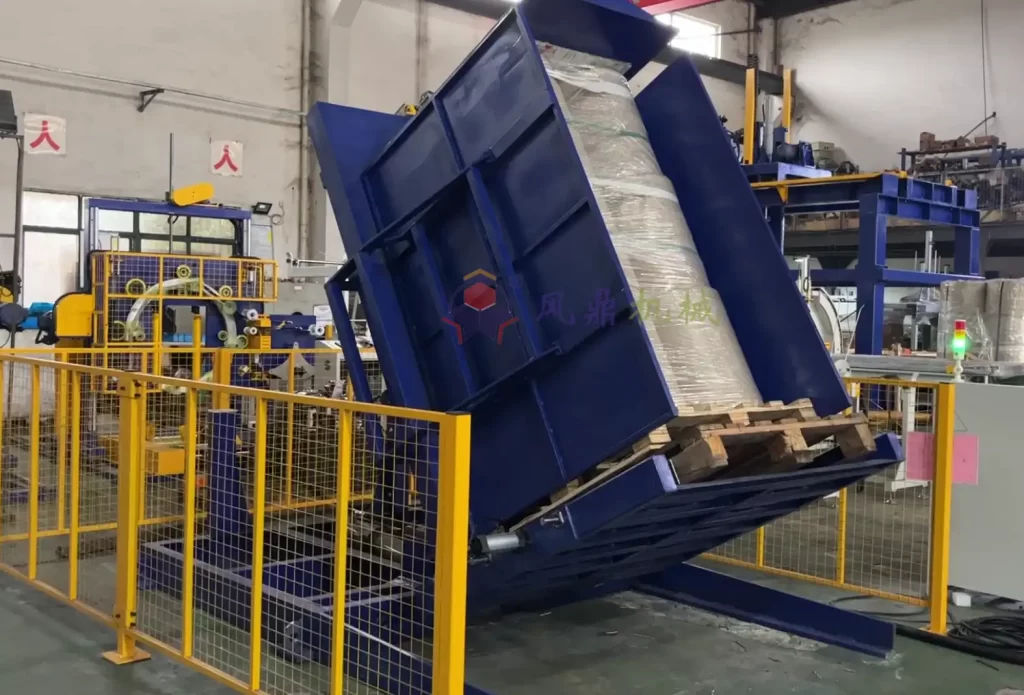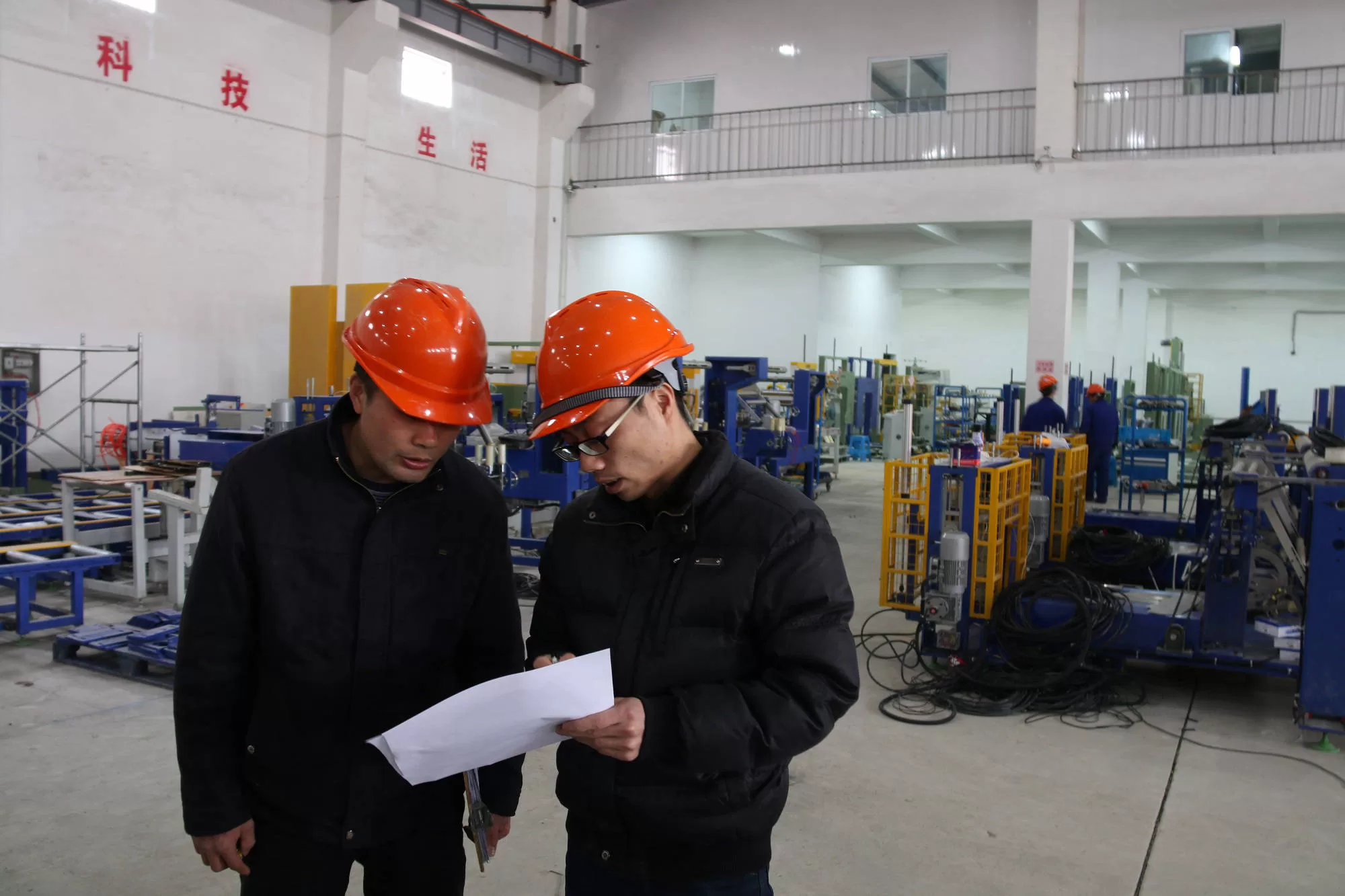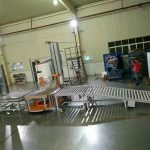How to Convince Stakeholders: The Financial and Operational Benefits of Pallet Inverters
- How to Convince Stakeholders: The Financial and Operational Benefits of Pallet Inverters
- Introduction
- 1. Understanding the Role of Pallet Inverters
- 2. Financial Benefits of Pallet Inverters
- 3. Operational Benefits of Pallet Inverters
- 4. Reducing Human Error and Waste
- 5. The Case for Long-Term Investment
- 6. Calculating the Return on Investment (ROI)
- 7. Enhancing Employee Productivity and Satisfaction
- 8. Supporting Sustainability and Reducing Waste
- 9. Reducing Downtime with Pallet Inverters
- 10. Addressing Common Stakeholder Concerns
- 11. Case Studies: How Businesses Benefit from Pallet Inverters
- 12. Presenting a Compelling Business Case to Stakeholders
- Conclusion: The Strategic Value of Pallet Inverters

Introduction
Convincing stakeholders to invest in new equipment can be challenging, especially when balancing operational benefits with financial considerations. Pallet inverters, designed to rotate and invert pallet loads with ease, present a compelling case for investment due to their potential to enhance operational efficiency, reduce labor costs, and improve safety. This article explores how pallet inverters can offer both financial and operational benefits, helping you present a convincing argument to your stakeholders.
1. Understanding the Role of Pallet Inverters
Pallet inverters are machines designed to rotate and flip loaded pallets, allowing for quicker, safer, and more efficient handling of goods. These machines are used in various industries such as food and beverage, pharmaceuticals, and warehousing, where frequent load transfers and restacking are required. By inverting pallets, businesses can streamline processes like removing damaged goods, swapping pallets, or consolidating loads, reducing the need for manual labor and increasing productivity.
The core of their value lies in their ability to handle loads efficiently while minimizing the risk of damage to products. In manual processes, the physical handling of pallets can lead to errors, worker fatigue, and even injury, all of which are mitigated by automation through a pallet inverter.
2. Financial Benefits of Pallet Inverters
One of the main challenges stakeholders face when considering new investments is the potential return on investment (ROI). Pallet inverters have a strong financial case due to several key factors:
- Labor Cost Reduction: Pallet inverters can significantly reduce labor requirements by automating pallet handling tasks that would otherwise require manual effort. With labor costs rising globally, investing in automation that reduces the need for repetitive manual work can result in considerable savings. A company that typically employs multiple workers to manually rotate pallets can reduce its workforce needs for these tasks by integrating a pallet inverter, directly impacting operational costs.
- Minimizing Product Damage: Manually flipping or moving heavy loads increases the risk of product damage, which directly affects profitability. Product returns and damaged goods not only incur a financial cost but also affect customer satisfaction and brand reputation. Pallet inverters ensure that goods are handled with care, thus reducing the frequency of damaged items and saving money over time.
- Operational Efficiency: Time is money in any business, and pallet inverters speed up workflows by handling pallets faster than manual labor can. This improved efficiency means more goods can be processed in a shorter time, reducing bottlenecks and ensuring that the entire supply chain operates more smoothly.
3. Operational Benefits of Pallet Inverters
While the financial benefits may appeal directly to the bottom line, operational improvements can be just as compelling for stakeholders. Pallet inverters offer a variety of advantages that contribute to smoother operations:
- Improved Safety: One of the biggest operational benefits of pallet inverters is the increased level of safety they provide. Manual pallet handling is physically demanding and can lead to worker injuries, which can result in lost time and higher insurance costs. Pallet inverters reduce these risks by handling the most strenuous tasks automatically, ensuring workers remain safe and less exposed to potential harm.
- Increased Throughput: Pallet inverters can process more loads in a shorter amount of time than manual labor, contributing to faster order fulfillment and distribution. Faster load turnaround times mean that warehouses and factories can process more goods without increasing the workforce, making pallet inverters an essential tool for scaling operations efficiently.
- Flexibility in Handling Different Loads: Another significant benefit of pallet inverters is their ability to handle various types of loads, including fragile or heavy products. For businesses dealing with diverse inventory, this flexibility ensures that all goods are handled safely and efficiently without the need for specialized equipment for different products.
4. Reducing Human Error and Waste
Manual pallet handling is prone to human error, which can lead to accidents, product damage, and wasted time. Pallet inverters mitigate these risks by providing consistent performance, reducing the chances of error that come with manual processes. This consistency not only enhances productivity but also reduces waste in terms of damaged goods or improperly stacked pallets.
Additionally, pallet inverters optimize space utilization, which is an often-overlooked aspect of operational efficiency. By ensuring that pallets are stacked and moved correctly, these machines help maximize storage space, leading to better organization and smoother workflow in warehouses and factories.
5. The Case for Long-Term Investment
When presenting the financial and operational benefits of pallet inverters to stakeholders, it’s essential to frame the investment as a long-term asset. While the initial cost may seem significant, pallet inverters offer substantial savings over time through labor reduction, increased efficiency, and minimized product damage. Moreover, pallet inverters have a long lifespan, making them a reliable investment that will continue to deliver value for years.
It is also important to consider the cost of not investing in pallet inverters. Companies that continue relying on manual processes may find themselves at a competitive disadvantage, with higher labor costs, more frequent accidents, and slower operations than those that embrace automation.
6. Calculating the Return on Investment (ROI)
To convince stakeholders, it’s crucial to provide a clear ROI calculation. This includes not only the cost of purchasing and installing pallet inverters but also the savings on labor, product damage, and operational efficiency. For example, consider a warehouse that flips 100 pallets a day manually, requiring two workers. By integrating a pallet inverter, the warehouse may be able to reduce its workforce requirements by half, save time on each pallet, and lower the rate of damaged products. These savings, over time, will far outweigh the initial investment cost.
The ROI should also factor in the intangible benefits, such as improved safety, reduced downtime, and better working conditions for employees, all of which contribute to a more productive and positive workplace environment

Get Your Best Solution !
7. Enhancing Employee Productivity and Satisfaction
Employee satisfaction is a critical yet often overlooked factor when considering investments in new equipment. Pallet inverters improve workplace conditions by reducing the physical strain on workers. Tasks such as manually flipping heavy pallets can cause injuries and fatigue, leading to higher absenteeism, lower productivity, and increased employee turnover.
By automating the pallet handling process, pallet inverters not only ensure the safety of the workforce but also contribute to higher employee morale. Workers can focus on more value-added tasks rather than repetitive, physically demanding ones, which can lead to increased job satisfaction and better retention rates. In the long run, this improvement in the working environment translates to higher overall productivity and reduced costs associated with hiring and training new employees.
8. Supporting Sustainability and Reducing Waste
Sustainability is becoming a core focus for many businesses, and stakeholders are increasingly looking for solutions that align with eco-friendly practices. Pallet inverters can play a significant role in supporting sustainability initiatives by reducing waste.
Manual handling often results in product damage, which leads to increased waste and higher material costs. By minimizing damage, pallet inverters contribute to more efficient use of resources. Additionally, pallet inverters can help optimize packaging, ensuring that pallets are used effectively, reducing the amount of packaging material required. This not only helps the environment but also improves a company’s bottom line by lowering packaging and disposal costs.
9. Reducing Downtime with Pallet Inverters
Another significant operational benefit of pallet inverters is their ability to reduce downtime. Downtime is one of the most costly aspects of any business, whether it’s due to equipment failure, labor shortages, or inefficient manual processes.
Pallet inverters are highly reliable machines that can handle a large number of pallets with minimal maintenance. Their automated processes eliminate bottlenecks caused by manual pallet handling, allowing businesses to operate more smoothly and without interruptions. Additionally, pallet inverters can be easily integrated into existing workflows, ensuring that operations remain continuous and uninterrupted.
When stakeholders see the potential reduction in downtime, they will understand how this translates into a more resilient and responsive business, capable of handling fluctuations in demand and keeping operations running efficiently.
10. Addressing Common Stakeholder Concerns
To fully convince stakeholders of the value of pallet inverters, it’s essential to address common concerns they may have:
- Initial Costs: Stakeholders may be concerned about the upfront investment required for pallet inverters. While these machines do require initial capital, the long-term benefits of labor savings, reduced product damage, and increased operational efficiency provide a strong case for the total cost of ownership being lower than manual alternatives.
- Learning Curve: Some stakeholders may worry that adopting new machinery will require extensive training and disrupt operations. However, pallet inverters are designed with user-friendly interfaces that require minimal training. Once integrated, they quickly become an essential part of daily operations, without causing significant disruptions.
- Scalability: As businesses grow, so do their operational needs. Pallet inverters are scalable solutions that can grow with the business, handling increasing load volumes and operational demands without requiring significant modifications or upgrades. This scalability ensures that pallet inverters remain valuable assets, even as the company expands.
11. Case Studies: How Businesses Benefit from Pallet Inverters
Providing real-world examples can be a powerful way to convince stakeholders. Here are a few case studies that illustrate the tangible benefits of pallet inverters:
- Case Study 1: A Large Pharmaceutical Company: This company was struggling with high labor costs and frequent product damage due to manual pallet handling. After investing in pallet inverters, they were able to reduce their labor force by 20%, significantly lowering costs. Moreover, product damage decreased by 15%, resulting in fewer returns and better customer satisfaction.
- Case Study 2: A Food and Beverage Manufacturer: This manufacturer needed to improve their operational efficiency to meet growing demand. By integrating pallet inverters into their workflow, they increased their throughput by 30% and reduced order fulfillment time by half. The investment paid off within two years, and the company now relies on pallet inverters to maintain their competitive edge.
- Case Study 3: A Logistics Warehouse: Faced with frequent injuries among workers manually rotating heavy loads, this warehouse turned to pallet inverters as a solution. Worker injuries related to pallet handling dropped by 80%, significantly lowering workers’ compensation claims and improving overall safety.
12. Presenting a Compelling Business Case to Stakeholders
To successfully convince stakeholders, it’s important to present a well-rounded business case that highlights both financial and operational benefits. This involves not only showcasing the potential cost savings and operational improvements but also addressing any concerns or objections upfront.
Stakeholders are more likely to support the investment when they understand how pallet inverters contribute to:
- Long-term cost savings through reduced labor and product damage
- Enhanced operational efficiency with faster processing and reduced downtime
- Improved workplace safety, reducing the risk of injury and associated costs
- Sustainability benefits through reduced waste and optimized resource usage
Conclusion: The Strategic Value of Pallet Inverters
In conclusion, pallet inverters provide clear financial and operational advantages that make them a valuable investment for any business dealing with palletized goods. By reducing labor costs, improving safety, minimizing product damage, and increasing operational efficiency, pallet inverters offer a high return on investment over time.
For stakeholders, the decision to invest in pallet inverters should not only focus on the initial cost but also on the long-term benefits they provide. In today’s competitive market, companies that embrace automation are better positioned to scale, reduce waste, and enhance productivity, giving them a distinct advantage.
Presenting a clear and compelling case with detailed cost savings, operational improvements, and examples of real-world success will help stakeholders see the strategic value of integrating pallet inverters into their operations.

Get Your Best Solution !








